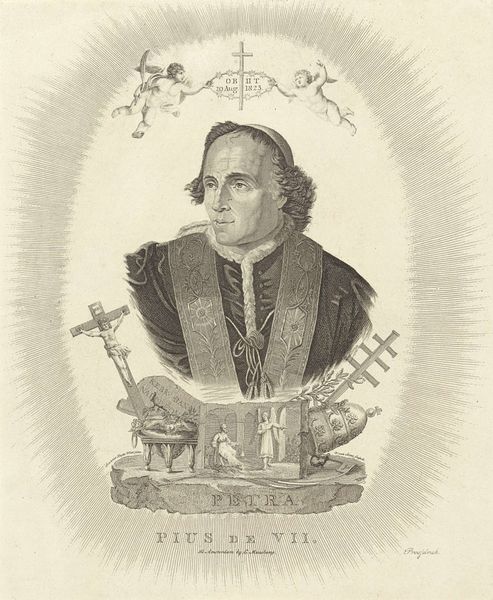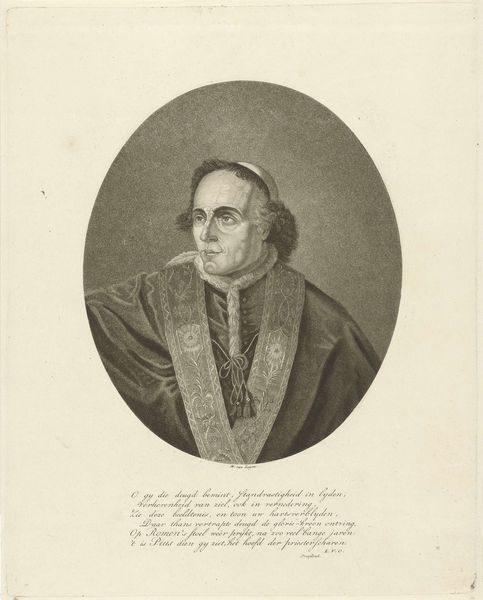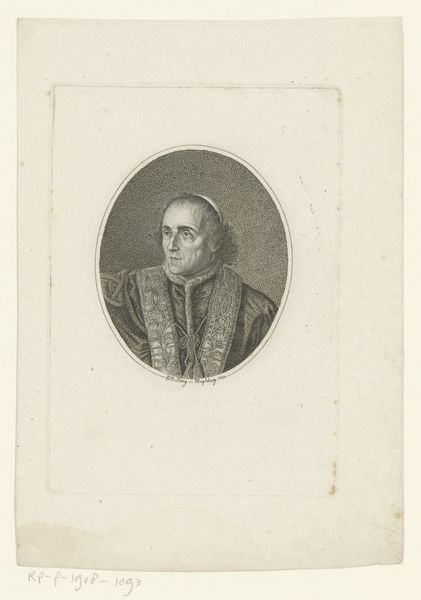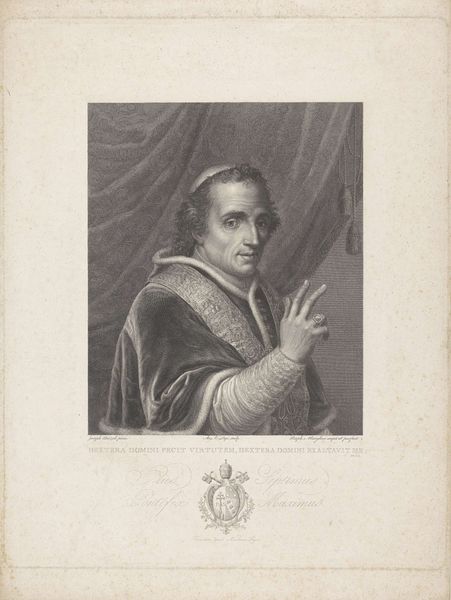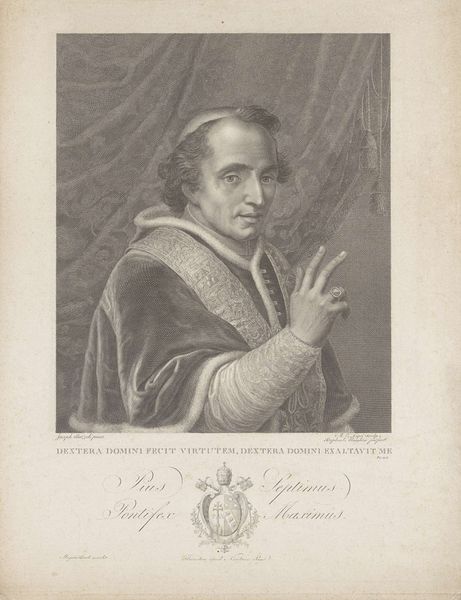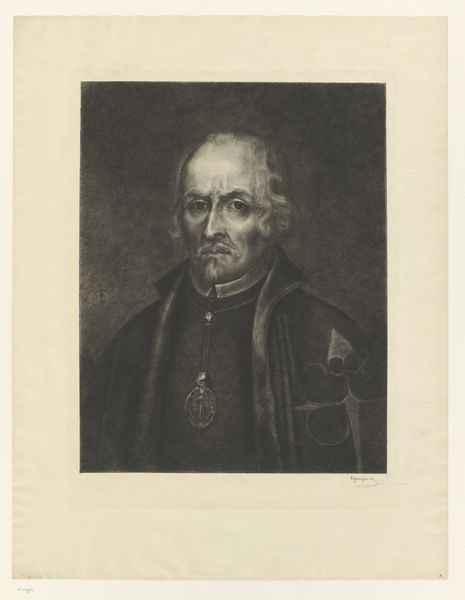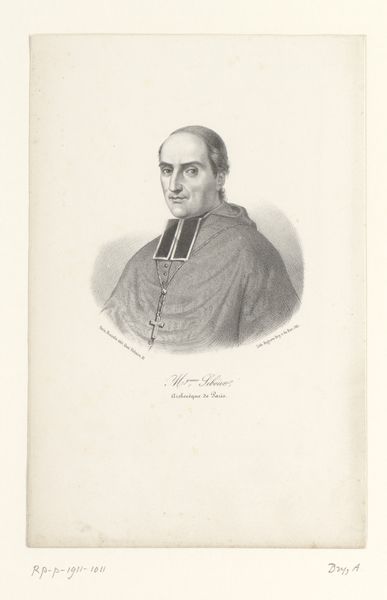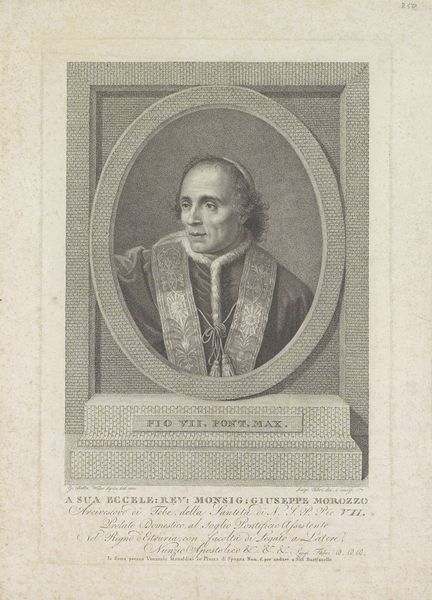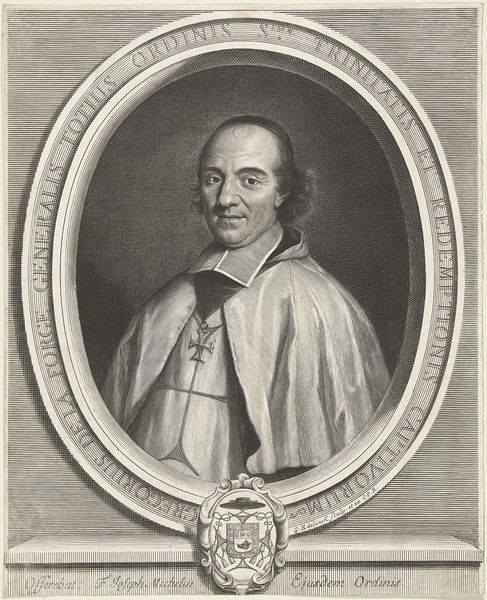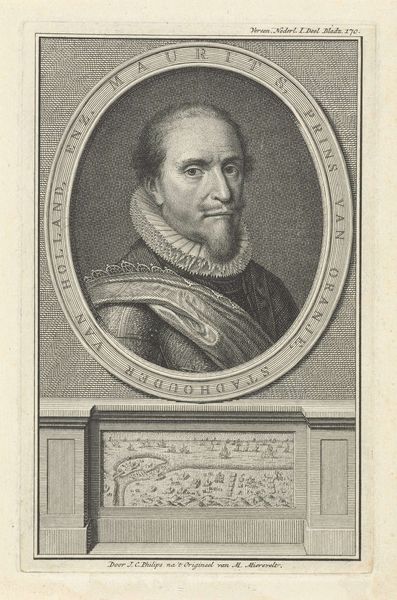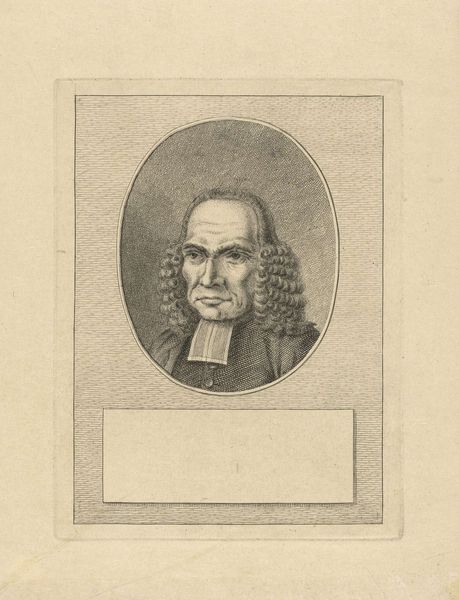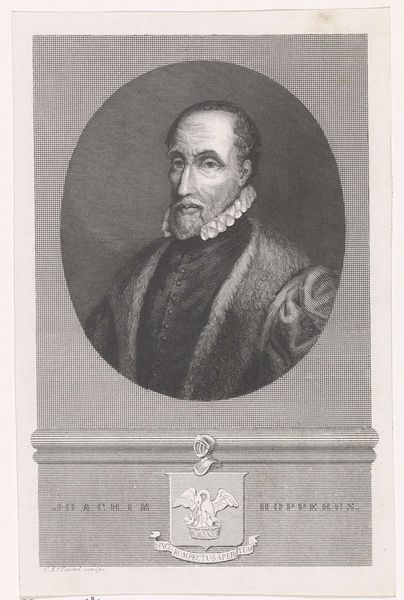
print, engraving
#
portrait
#
neoclacissism
# print
#
charcoal drawing
#
pencil drawing
#
graphite
#
engraving
Dimensions: height 260 mm, width 205 mm
Copyright: Rijks Museum: Open Domain
Curator: Here at the Rijksmuseum, we have an intriguing neoclassical print entitled “Portret van paus Pius VII," dating from between 1823 and 1825. Editor: My immediate response is one of reserved austerity. There's a solemn stillness, achieved through delicate strokes and an oval frame, lending him the aura of an antique cameo. The subject's expression appears to me to be somewhat…resigned. Curator: Precisely! Consider the era. Pius VII had a complex relationship with Napoleon, enduring imprisonment before ultimately restoring the Papal States. His story is fraught with diplomatic tension. Editor: Which this engraving, I think, cleverly alludes to. His gaze avoids direct confrontation, his attire ornate yet conveying a sense of weight, both literal and metaphorical. This feels less like a celebration of power, and more a commentary on its burdens. Is it possible to tell more about this particular print? Curator: The medium itself—printmaking—highlights a shift. Previously, painted portraits of such figures cemented power. Print allowed a wider, more democratized distribution, even though it was still, to a certain extent, controlled and mediated. Editor: It is fascinating how this act of reproduction shifts the interpretation. How did different factions receive a depiction like this? Was it simply a means of propagation or a calculated form of image control? Curator: This particular era experienced massive societal and political change following the French Revolution. In disseminating his likeness broadly through printed images, Pope Pius VII's strategies likely represented an attempt to reinforce a consistent and reliable image across Europe. Editor: Considering our contemporary world, marked by endless reproductions and rapidly disseminated media, the study of historical portraits gains deeper meaning, because, I mean, this engraving echoes within current dialogues about image construction and control, don't you think? Curator: Absolutely! And analyzing images like this encourages dialogue regarding how we form our contemporary political and personal identities as well. Editor: Food for thought, indeed. Curator: Undoubtedly. Let us continue through the exhibit.
Comments
No comments
Be the first to comment and join the conversation on the ultimate creative platform.
